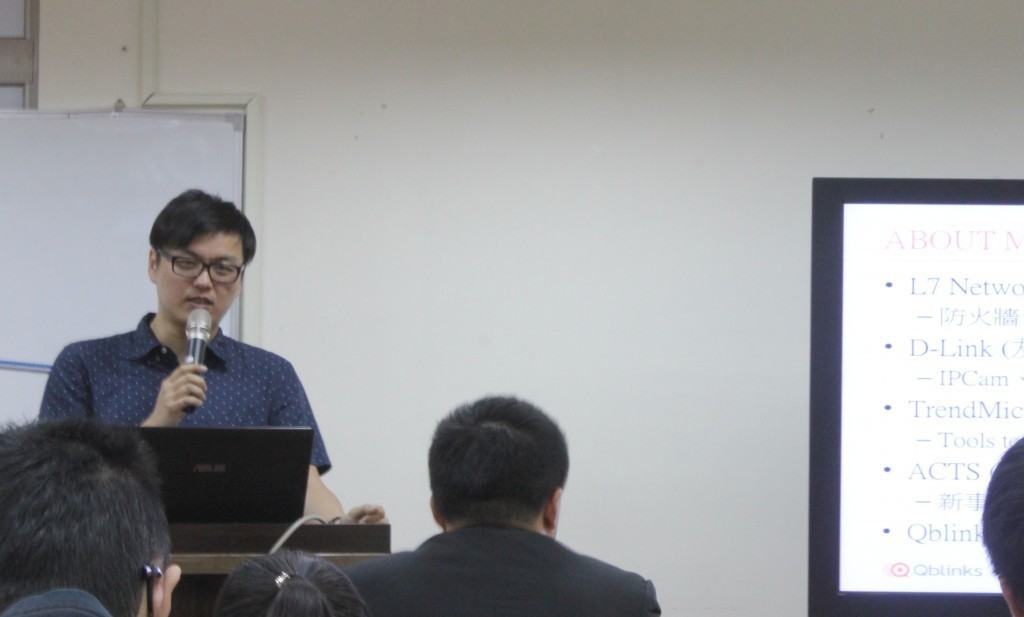Taiwan is a “Me Too” Market – What is Popular Abroad Will Be Popular in Taiwan – An adventure from Manufacturing to IoT Industry (Part I)
The trend of IoT (Internet of Things) keeps expanding in the industry – from smart devices, smart cities to data-sharing platforms. However, while each of us is following this trend, we have to figure a way to combine IoT into the manufacturing industry, the relatively leading industry in Taiwan.
The forum “An Adventure From Manufacturing Industry to IoT” was held by the Department of Young Affairs, Taoyuan, and co-held by Small and Medium Enterprise Administration, Ministry of Economic Affairs, in which entrepreneurs from the manufacturing and IoT industry were invited to share their experiences on integrating business of the old and innovative industry, and their exploration of oversea markets.
“In fact, what I had experienced was on the opposite way that I came from the IoT to manufacturing industry,” said by Li-Ming Huang, the CTO of Qblinks at the beginning of the talk. Having work experiences at L7, D-Link, Trend Micro and ACTS for many years, Huang had a quality life as a software engineer until he was recruited to the team focusing on developing IoT-related products. The product of Qblinks was a remote control developed by Huang and his teammates from an idea of Bluetooth that can control various devices.
Similar streetlights, which detective system will automatically make the lights on when people pass by, the concept of IoT has been living in our lives for a long time. It used to be one-order-one-action on cellphones before, but now we are able to conduct one-order-multiple-actions in our phones due to development of IoT. “The biggest problem among IoT is communication. There is no common language in the IoT world yet and people in this field have always been working on this issue. For example, companies such as Google and Apple are trying to solve the challenges from software prospective; while ARM, a semiconductor company, is trying to solve the issue from the downstream of the industry,” said by Huang. In Huang’s opinion, many experts in the IoT industry all agree that the language of IoT will eventually be integrated into the Internet. “It is easy to conflict with each other between hardware, and therefore, “Go online” will be the easiest way to be able to communicate, which is also the reason we emphasize the development of the integration and connection during the process rather than the invention of the product itself.”

A Coin-Size Qmote Can Control All Smart Devices
At the early stage of startup, the co-founder Shao-Chun Chen was in charged with software development and Huang was responsible for writing App, which was also his first challenge after joining the startup team. After solving the technical issue on the program language and confirming to apply Bluetooth low energy (BLE) into the product, they needed to determine the device itself – which turned out to be a tiny shape of drop with the size of a 5-dollar coin.
“IoT plays an important role in smart family but the applications of IoT can only be used mostly ‘at home’,” said by Huang. “We want to put Qblink on the Clould so that it will become part of the Internet to connect with others.” Users can set the Pattern of Qmote by giving different orders to different IoT hardware via App. For examples, clicking twice toward the alarm means to stop the alarm and clicking once toward the audio system is to play the music. In addition, Qmote can memorize the Pattern from different users. “BLE can be connected to only one cell phone, and therefore, Qmote is customized to different users. For instance, Qmote can recognize that one click from a male user is the order to turn on the TV, while the same order from the female user is to turn off the volume of the TV.”
Taiwan is a “Me Too” Market – What is Popular Abroad Will Be Popular in Taiwan
Interestingly, Qblinks did not include Taiwan as one of their target markets. “But we know Taiwan is a “me too” market, which means what is popular abroad will most likely be popular in Taiwan, too,” said by Huang.
They started from the biggest U.S. crowdfunding platform Kickstarter, by which the users are more willing to try something new and Qblinks was able to collect the feedbacks of this device from the users. The marketing strategy of Qblinks completely started from the local prospect – getting feedbacks and opinions from the locals and marketing its product based on the preference of the local customers.
The marketing strategy worked. The team were funded 200 thousands dollars in two months with the total of 6000 sponsors and 18,000 orders of Qmote. According to the crowdfunding statistic, they learned that those sponsors came from 89 countries, including the half from the North America and 30 – 40% from the UK, Germany, France and Japan. Only 89 orders were from Taiwan, which also reflected what they expected toward the market in Taiwan.
Huang suggested that startups start with the “marketing first, manufacturing second” strategy if they lack for enough capitals at the beginning. He also mentioned the invisible cost from the crowdfunding that is not obvious to the public, such as video making and PR. Besides, we need to present the product’s pictures to be shown on the crowdfunding website even though Kickstarter does not allow the real product to get funded on the website. Therefore, it cost around 3 thousands dollars to create Qmote models only to be shown on Kickstarter. “The most difficult part is management on the manufacturing stage. Since the efficiency is a key factor to succeed for startups, we cannot spend so much cost and time supervising back-end manufacturing stage. Moreover, we have to be aware of the safety regulations, product designs and its materials, all of which are very challenging to a startup company,” said by Huang.
“Internet” Rather Than “Thing” in the IoT Industry
Qblinks is the first Taiwanese company to be able to present their product on IFTTT (If this then that) Cloud platform. IFTTT owns 200 channels of IoT by integrating various Internet services into its platform. Users can make an order on the Internet service A, which would trigger the specific action on the Internet service B. As a result, it is not necessary for each company to write program because once each company is connected to the Cloud, they can make different orders via the Cloud.
“We even told our product’s manufacturers that our goal is to sell our software instead of the hardware. We never plan to earn profits from the hardware,” said by Huang. “This is what I want to share in the IoT industry – in this field, we should focus on the Cloud and Internet instead of the product itself or the App, which are easily learned and exceeded by competitors after all.”
中文版連結
封面圖片來源:Qbliinks 網站截圖










留言討論